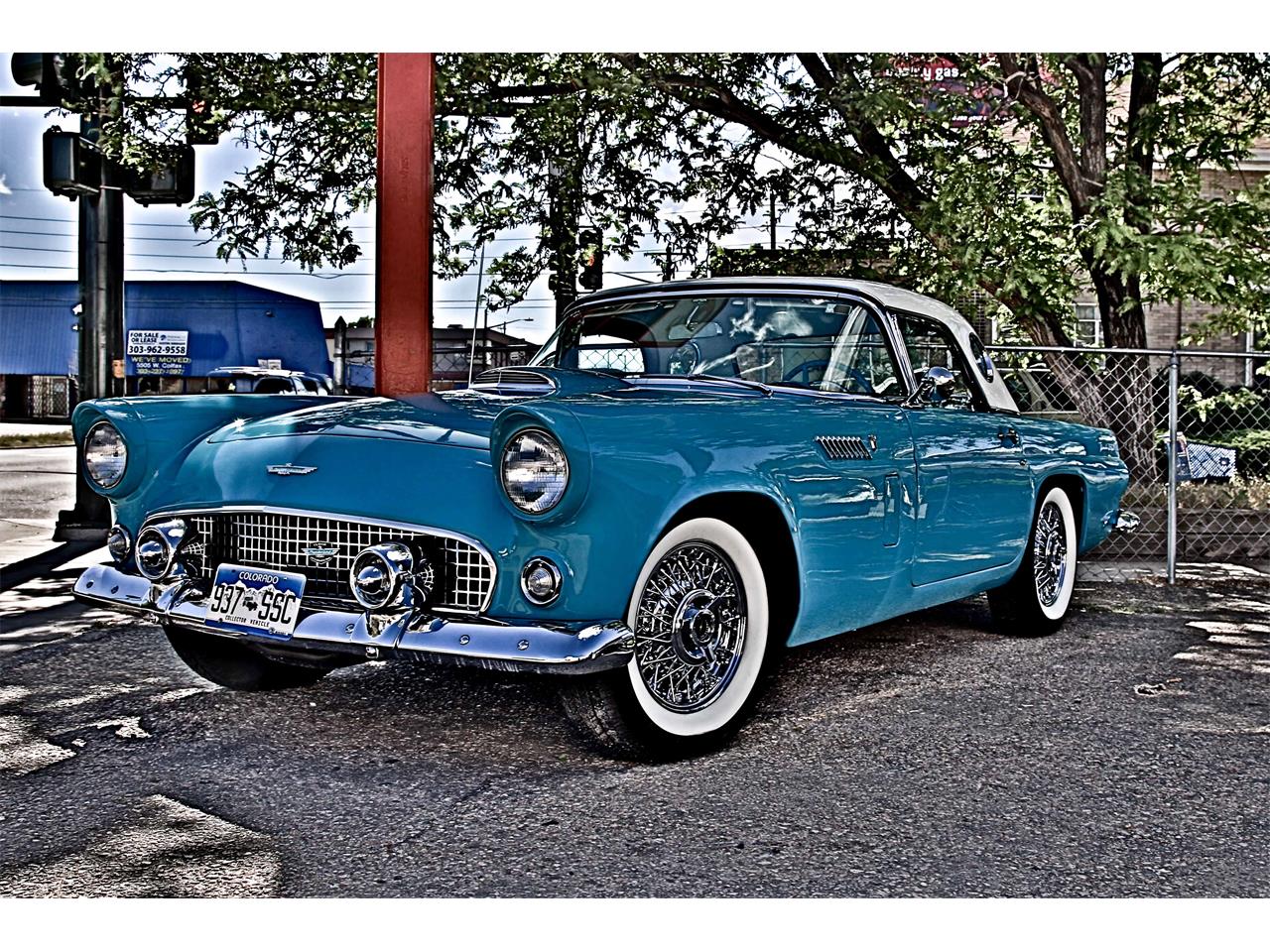
It was the first to have a fully padded dash surface. The 1957 Thunderbird included a restyled front grille, rear deck and new bumpers. With options however, the price jumped all the way to $3,800. The 1956 Thunderbird also saw an increase in price with the hardtop now selling for $2,944 and the convertible selling for $3,019. Last-minute improvements, including the addition of the optional 312 CID V-8 engine, gave the second edition of the Thunderbird better handling and increased performance to also improve Thunderbird’s sports car feel. Standard equipment included energy-absorbing passenger-side instrument panel padding, a concave safety steering wheel, safety door latches and a shatter-resistant mirror. The 1956, rarest of Classic Thunderbirds with a production total of 15,631, incorporated Ford’s new safety concepts. Other design changes included the relocation of the spare tire from the trunk to the exterior of the car right above the newly extended bumper.
#1956 ford thunderbird driver
Portholes were now being offered as an option with the hardtop, a move designed to increase driver visibility, but that went on to become one of the more distinctive features of the Thunderbird. The 1956 Thunderbird was very similar to the 1955 model with some notable exceptions. All cars had vinyl upholstery matching the exterior paint color. The car sold for a base price of $2,695 with the convertible selling for $2,765 and was available in five colors: Thunderbird Blue, Raven Black, Snowshoe White, Goldenrod Yellow, and Torch Red. Over 16,000 units of the 1955 Thunderbird were ultimately sold.

The first Thunderbird came off the Dearborn assembly line Septemand had at least 4,000 orders waiting on the first day of production.
#1956 ford thunderbird manual
The engine was a Mercury 292 cubic inch V-8, exclusive to the Thunderbird line, which had 198 horsepower with the automatic and 193 horsepower with the manual transmission. The 1955 model had a removable hardtop with a 102 inch wheelbase chassis that was 175.3 inches overall, with a width of 72 inches and a height of 52 inches. Ford sold a first year total of 16,155 Thunderbirds. Public orders totaled more than 3,500 within the first 10-day selling period, while planned volume for the model year was only 10,000 units.
#1956 ford thunderbird full
Customer demand for Thunderbird resulted in its October public introduction which was nearly a full month ahead of schedule. 9, 1954, at Ford’s Dearborn (Mich.) Assembly Plant and generated immediate excitement. Boyer (under the direction of Franklin Q. Production of the car designed by William P. The Thunderbird two-seater was instantly popular with overtones of a high performance sports car, yet it had a strong appeal to luxury-minded buyers seeking refinements such as roll-up windows, a selection of power extras, and steel bodywork as opposed to fiberglass. Thunderbird enjoys a storied history whose iconoclastic entry onto the scene in 1954 single-handedly erected the personal luxury-car segment in the United States. A young Ford car stylist, Alden “Gib” Giberson, won a $95 suit and an extra pair of pants from Saks Fifth Avenue for suggesting the name Thunderbird. More than 5,000 names were considered for the new Ford project in 1954. Eleven generations of Thunderbird have produced treasured collectors’ items in a variety of models, including the design which in 1989 earned Thunderbird its third award as Motor Trend’s “Car of the Year.” 22 was the date of public introduction of the original two-seater in 1954. The flight of the Ford Thunderbird has taken several twists and turns during its first 42 year existence while maintaining its path in the forefront of American automobile legends. In short, it was the essence of personal luxury. The T-Bird roadster, introduced at the Detroit Auto Show in 1954, was a two door roadster with a focus on modern comforts, conveniences and all weather protection, as well as power, performance and handling. As Motor Trend’s Detroit editor, Don McDonald wrote “Perhaps the most outstanding feature of the new Ford Thunderbird is the clever wedding of sports car functionalism with American standards of comfort”. Given these influences and the burgeoning American economy it was no surprise that the introduction of the 1955 Thunderbird was a huge success, easily filling a market niche.

At the same time, interest in motorsports increased and car racing gained popularity. American soldiers in Europe during the war had seen Italian, German, French, and English sports cars and had brought some of these vehicles home with them. One of the most popular types of vehicle was the sports car.

While no cars had been produced during World War II, the late 1940’s saw a huge rush in production as the American car companies tried to fill the postwar demand for vehicles.


 0 kommentar(er)
0 kommentar(er)
